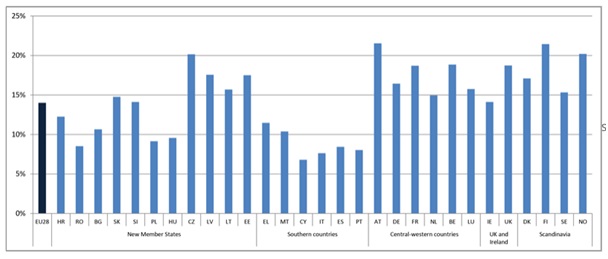 Research Paper By Natalia Pliszczak
Research Paper By Natalia Pliszczak
(Life Coach, ZURICH)
What is workplace mobbing?
« Workplace mobbing is a destructive social process in which individuals, groups, or organizations target a person for ridicule, humiliation and removal from the workplace. Its victims, their family members, friends, and co-workers are frequently unable to make sense of the experience or to mobilize resources for recovery.»[1]
Mobbing can be very destructive, and, depending on the severity of it, it can have very destructive consequences for the person suffering it.
« Victims of mobbing report a range of negative physical and psychological symptoms which include headaches, chronic pain, depression and anxiety. Work performance may suffer, which could lead to termination or demotion and difficulty in finding a new job after leaving the company. In some cases, mobbing attacks can significantly damage the victim’s reputation, effectively ending or the railing the target’s career. »[2]
It is very hard for the victim to regain confidence after such an experience.
Once a person is confronted to mobbing, they have different options in front of them, but in the end, it will result of the choice between these two options: staying in the company, and finding a way to cope or end the situation; or leaving the company.
If the latter option is chosen, there is a fear of returning to organizational work life. Some mobbing victims end up working for themselves after working on themselves through self-employment or entrepreneurship. It’s not necessarily that this person was strongly attached to being self-employed before, it is just that the circumstances have changed and they cannot see them going back to working for someone else.
Other mobbing victims will eventually return to organizational life, but they will return change and will be more wary and conscious about their environment.
Finally and unfortunately, due to a deeper trauma, some victims won’t be able to return to work.
How can coaching help the person overcome this situation?
First of all, it is important to outline that for some case, it might be important for the mobbing victim to see a psychotherapist.
In fact, coaching is not diagnostically driven and cannot be used efficiently in case the person has psychological issues resulting from the mobbing.
If the client seems to have a psychological problem, they must first be directed to a psychotherapist. Only once these issues are solved, will they be able to move forward and consult a coach.
Due to this situation, a coach won’t always intervene at the same moment in the client’s journey. The work of the coach can differ whether the mobbing victim is still working at the company or if they have already left.
The coach in that situation must have some understanding of mobbing and must understand that coaching progress can go slower. Having an understanding of mobbing will also give the coach more credibility towards their client, as they studied the case or experienced it themselves.
Coaching can help mobbing clients:
Is the coaching process any different from other cases?
The first steps of the coaching relationship will look like any other coaching relation. It will be to define and clarify the partnership. The client will be informed what to expect from the process, and what not to expect from it. Administrative details will also be mentioned, and the coaching agreement created.
Very early in the process, the coach needs to understand how comfortable the client is with talking about their experience. We don’t want to force the client to do or say more than they can handle. If the client agrees to share their experience, the coach will always make sure not to cross boundaries. If the client doesn’t want to share their experience, the coach will revolve around the issue without asking specific things about the mobbing.
When the client needs to set their goal for the overall coaching relation, it is important to take into account whether the client is still in a situation of mobbing or already out.
If they are still in a situation of mobbing, the coach should encourage the client to explore desired outcomes regarding their situation at work.
Goal setting can take longer than usual, because of the situation. The coach will spend as much time as needed helping the mobbing victim to identify what needs to happen before they are able to start the goal-setting process.
Once the goals are set, the coaching sessions can start.
If the client is still at the workplace
In that case, the coach can help the client more specifically in the following areas:
If the client already let their job
In that case, the coach can help the client more specifically in the following areas:
What about the companies where mobbing situations take place?
Mobbing situations in companies are far from being unusual. A recent study from the Workplace Bullying Institute shows that 20% of Americans already experienced mobbing. [3]
In Europe, numbers are bits lower according to the Euro found, but they are still significant:
Cases of mobbing have been increasing the recent years, and many companies seem to take this issue seriously enough. Many times, the company itself allows this kind of behaviour without sanctioning the mobbing perpetrator. In fact, nowadays, being successful has become so important that a lot of people consider that behaving that way can be justified in order to move up the ladder.
On the other hand, many mobbing perpetrators are usually people in the organization who have more power, and it is easier to get rid of a “regular” employee than to get rid of people with power.
I truly believe that companies should train their employees and manager on detecting and avoiding this kind of behaviour. This kind of behaviour should also be seen as wrong, and no one should be rewarded for it.
I think this goal can be achieved through coaching, although this would be in this case a different type of coaching that for the individual coaching offered to the mobbing victim.
Such coaching involves leadership training (knowledge, skills, and attitudes) for creating a respectful work environment and effective enforcement methods for dealing with any incidents related to mobbing.
The first thing is to help the manager identify if he’s a perpetrator himself and to make him analyse his behaviour. If he’s a perpetrator, coaching will assist the manager in changing his behaviour.
Then, there are several forms of leadership coaching in workplace mobbing, if the manager is not a perpetrator himself. One form is assisting managers in using confrontation as an intervention in dealing with perpetrators.
This type of coaching can have a preventive effect.
Another form of coaching involves educating managers about the negative implications of the presence of mobbing in their organization.
The third form of coaching helps prepare the manager to implement policies and procedures related to mobbing.
Conclusion
Mobbing is a terrible situation that can lead to terrible consequences.
It changes one’s life forever.
Luckily, mobbing situations can be avoided in the first place if they are identified by the organizations on time. This is why some actions should be taken place directly in the organizations, to prevent and solve mobbing situations.
If unfortunately, a mobbing situation already took place and affected the victim, coaching is a powerful tool to help the victim heal, move away and recover from the situation.
So many things still need to be changed in order to improve this contemporary tendency of workplace mobbing, but I have hope this issue will soon be more heard and known, and I’m sure coaching will play a big role in the resolution of this problem.
Interesting reads
Resources
[1]« Overcomingmobbing » by Maureen Duffy & Len Sperry
[2]https://smallbusiness.chron.com/mobbing-workplace-43426.html
[3]https://www.thebalancecareers.com/bullying-stories-2164317
[4]https://www.eurofound.europa.eu/publications/report/2015/violence-and-harassment-in-european-workplaces-extent-impacts-and-policies
